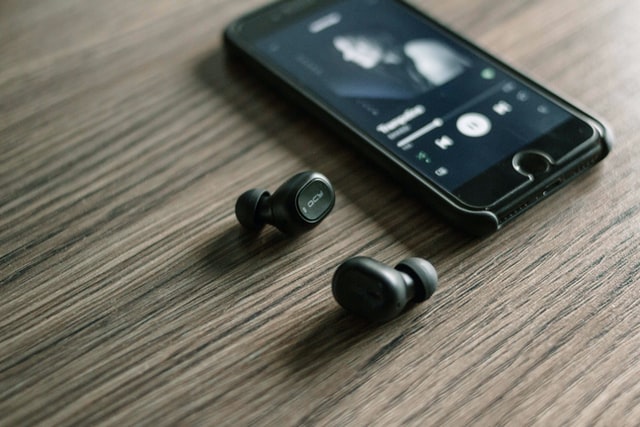It wasn’t too long ago that we were buying our favorite artists’ CDs, cassettes — and even vinyl — at the local music store. Later on, filling up our iPods with one dollar songs from iTunes became all the rave. These days, streaming services like Spotify, Pandora, SoundCloud and Apple Music have taken over the market as the new way to access and listen to music.
Instant, limitless access to music from all over the world has never been so easy or affordable. For a small monthly fee, you can explore your favorite artists and songs. For free, you can enjoy a similar experience as long as you don’t mind advertisements occasionally interrupting your playlist.
That’s when advertisers can make a positive impact on digital radio listeners.
Is Your Audience Listening?
According to Morning Consult, over half of adults ages 18-29 claim that they stream music at least once a day compared to 24% of all adults. Nearly 32% of those aged 30-44 also said they streamed music every day. However, the younger demographic continues to dominate the overall music streaming market.
“For advertisers looking to reach audiences on the go, this mobile audience will be of particular value,” states MarketingCharts.com. Over three-quarters of the total music streaming listeners are free subscribers, hearing ads in between every few songs.
Spotify and Pandora combined bring in over 100 billion ad-supported minutes each month. This makes them the two largest streaming services that offer an ad-supported subscription. iHeartRadio follows after with 76.79 billion ad-supported minutes and SoundCloud with 36.68 billion minutes each month.
With many streaming platforms offering the “freemium” model, consumers who opt for this are aware they will be receiving ads in exchange to avoid paying for a monthly subscription. Moreover, only one in-stream ad is played at a time, so marketers have the audience’s full attention.
Since free users significantly exceed paid users on music streaming services, advertisers are able to reach a substantial share of the U.S. population.
Placing Your Ads (The “Where”)
Streaming has begun to prove its success and popularity to advertisers with its audience-based one-to-one reach. During Q3 2020, streamers typically spent 1 hour and 24 minutes per day with ad-supported on demand services — and 109% of listeners aged 25 to 54 claim that advertisements keep them up-to-date with the latest trends and styles.
However, at the end of the day, an advertisement is still disrupting the user’s listening experience. There’s a lot to consider when running ads on a music streaming platform. We’ve come up with 5 T’s to help understand the logistics of seamlessly implementing a campaign on this unique medium:
- Time. You typically have less than 30 seconds to deliver a message to your listeners. Plus, their attention is usually focused on their external surroundings. Since audio ads are limited, you don’t have much time to build a story. If the listener can catch and even remember one key point or phrase from your ad, then you’re doing well.
- Talk. It can be difficult to fit everything you want to share in a 30-second ad. However, the importance of talking at a relaxed, understandable pace is crucial. Choose your voice talent wisely; Someone who can speak clearly and comprehensively is ideal. Write a script and practice it beforehand. Listeners will connect better to a voice that is slow and clear. Overall, less is more.
- Tune. It’s common for ads on digital radio to use background music. However, don’t distract the listener with a poor choice of background music. With the limited amount of time for your ad, choose the right part of a song or sound that helps draw attention to your campaign but doesn’t compromise the quality of your voice over.
- Transition. Interrupting is never ideal. Just as you would in person, be polite and mindful when cutting off the listener’s playlist. Think carefully about how your clip will be presented. With songs or other ads surrounding, it’s important to keep the rhythm going and arrange smooth transitions between your ad and whatever comes before or after. Opening your ad with a long pause can give the impression that there’s dead air in the station. Likewise, avoid a fade-out that’s unnecessarily long for the same reason.
- Tactic. Decide how you’re going to sell or pitch to your audience. A soft sell will be more suggestive and less forceful. On the other hand, a hard sell is going to urge the listener to take immediate action. Understand the market and how you can best connect with listeners when choosing your tactics.
Once you recognize and understand the 5 T’s, the creative process for your campaign will become much easier.
Engaging Your Audience (The “How”)
While some aspects of radio advertising remain consistent with the relatively new music platform, there are still significant differences that separate the two.
Forbes notes important aspects to keep in mind when creating intriguing ads for digital music platform users. Among them are some of the following:
- Short and Sweet: Keeping the ads short, simple and easy to understand will increase the likeliness of users engaging with your content. Get straight to the point, but make every second count. After all, you are disrupting their streaming experience.
- Natural but Entertaining: No one enjoys interruptions. Whether free listeners are working, traveling or exercising, finding a way to make your message flow with the content will keep users from eye-rolling at the disruption of their music. A natural, but entertaining ad will help prevent listeners from tuning out or losing interest in your campaign.
- Brand a “Sound”: Since consumers are only listening to your ad, consider discovering what your brand “sounds” like. Develop a brand jingle or slogan that is appealing to the ear. You can advance your brand’s recall by sticking to its identity and correlating it with positive content. Moreover, remember the importance of properly editing your ads. Audio is very competitive, so you can’t afford to have a campaign that’s even the slightest bit “boring.”
- Personalize and Leverage: Streaming apps present a more personal experience than radio, so it’s important to adapt ways to reach your audience’s demographics. Spotify and others provide several ways to help advertisers target their ideal audience with the right message, including geography, interests or income. Remember, ads on these platforms will most likely play on a mobile device; 67% of Spotify users alone stream music on their mobile device compared to 39% on desktops. Whether your audience is exercising, driving or simultaneously working on other tasks, displaying an accessible and clickable digital banner makes all the difference. Also, consider a call to action or offer that’s personalized and worth picking up the phone for.
Key Takeaways
- The “freemium” subscription within the platforms make up well over half of total users, so your ad has the potential to reach millions.
- Understand the amount of time you have, speed of which you talk, tune of your background noise, the rhythm of your transitions and the tactic of your pitch.
- This medium is unique, so your advertisement should be too.
Given all of this information, it’s no wonder that the popularity of digital streaming has skyrocketed. Advertisers will undoubtedly achieve success with their campaigns in this profitable medium.
Let us help you buy space across the digital radio landscape and take your brand to the next level. Connect with an MBI media strategist today!

